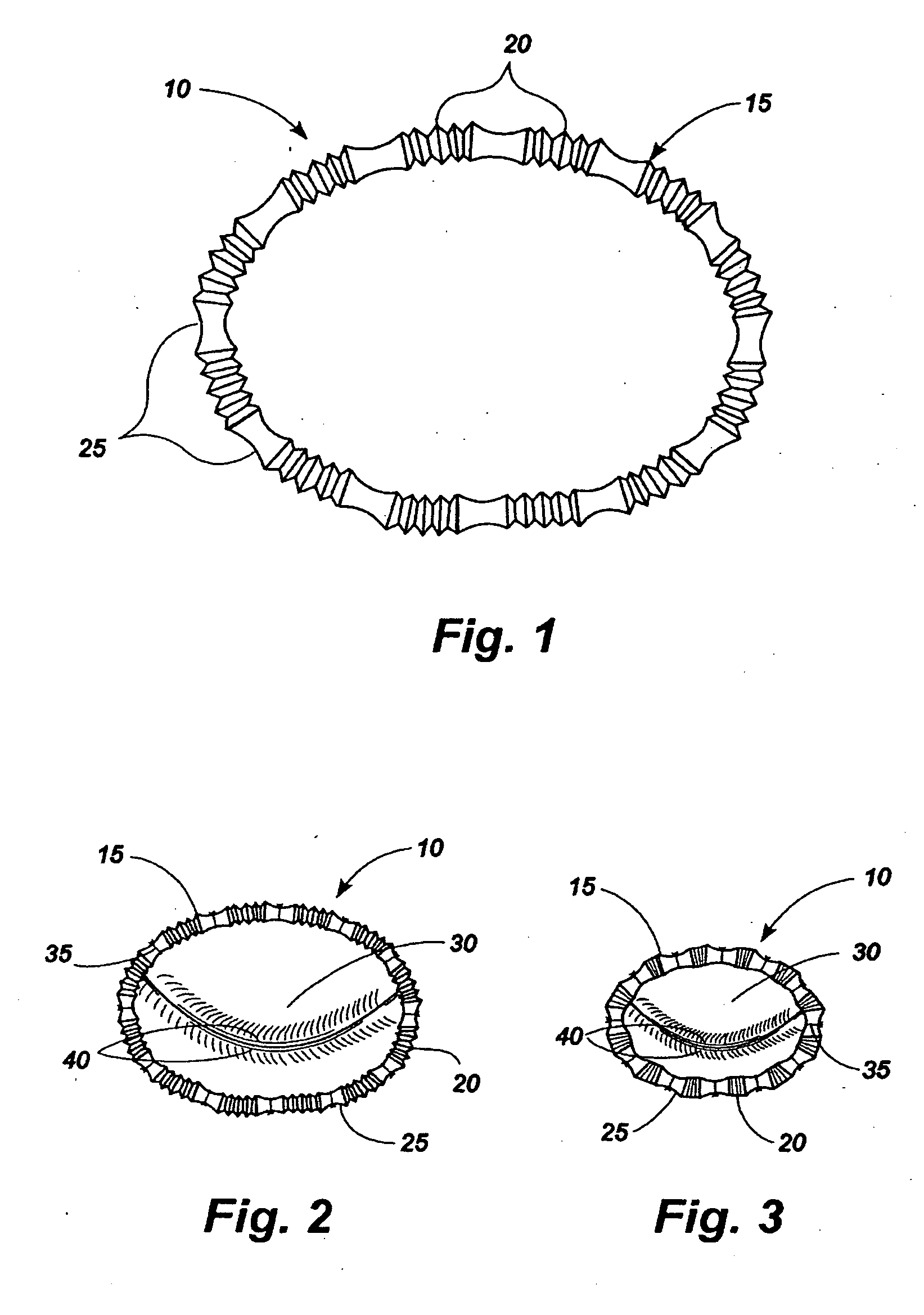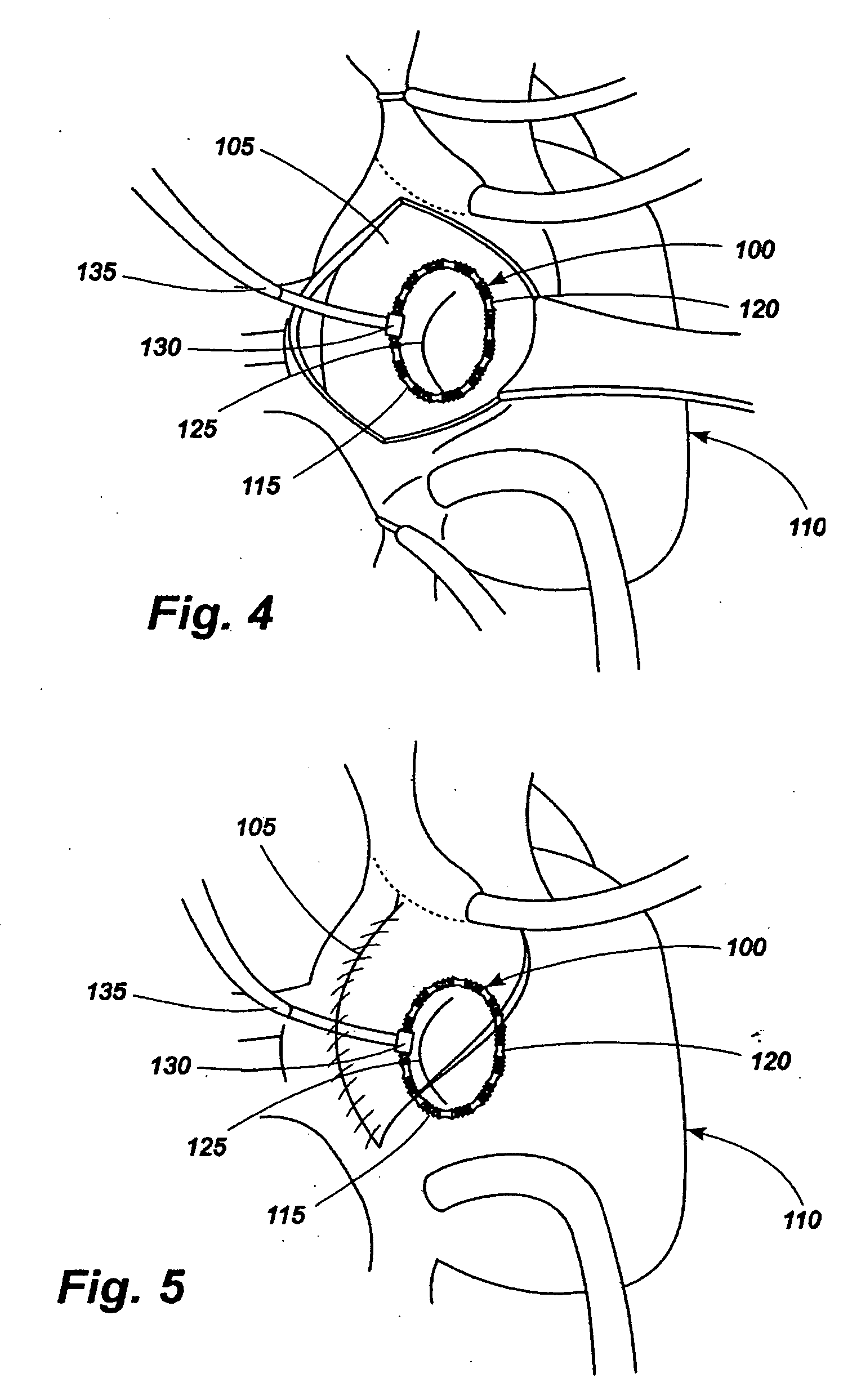Methods and apparatus for controlling the internal circumference of an anatomic orifice or lumen
a technology of anatomic orifices and lumens, applied in the field of surgical procedures, can solve the problems of affecting the effect of the surgeon's ability to achieve the desired effect, the exact amount of narrowing required for the desired effect, and the lumen structur
- Summary
- Abstract
- Description
- Claims
- Application Information
AI Technical Summary
Problems solved by technology
Method used
Image
Examples
Embodiment Construction
[0114] Referring now to the drawings, in which like numerals indicate like elements throughout the several views, an exemplary implant 10 comprising an implant body 15 is shown in FIG. 1. The implant body 10 may be provided in a shape and size determined by the anatomic needs of an intended native recipient anatomic site within—a mammalian patient. Such a native recipient anatomic site may be, by way of illustration and not by way of limitation, a heart valve, the esophagus near the gastro-esophageal junction, the anus, or other anatomic sites within a mammalian body that are creating dysfunction that might be relieved by an implant capable of changing the size and shape of that site and maintaining a desired size and shape after surgery. In various embodiments, the implant can be used for positioning an aortic valve, a triple A device positioning, aortic stent grafting applications, aortic endograph applications, aortic triple A stent graphs, ascending aortic aneurysm repair, for s...
PUM
 Login to View More
Login to View More Abstract
Description
Claims
Application Information
 Login to View More
Login to View More - R&D
- Intellectual Property
- Life Sciences
- Materials
- Tech Scout
- Unparalleled Data Quality
- Higher Quality Content
- 60% Fewer Hallucinations
Browse by: Latest US Patents, China's latest patents, Technical Efficacy Thesaurus, Application Domain, Technology Topic, Popular Technical Reports.
© 2025 PatSnap. All rights reserved.Legal|Privacy policy|Modern Slavery Act Transparency Statement|Sitemap|About US| Contact US: help@patsnap.com



